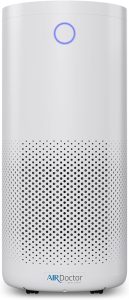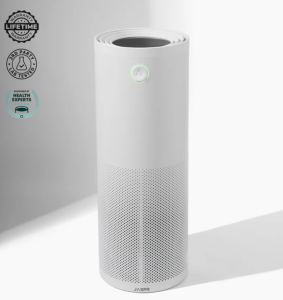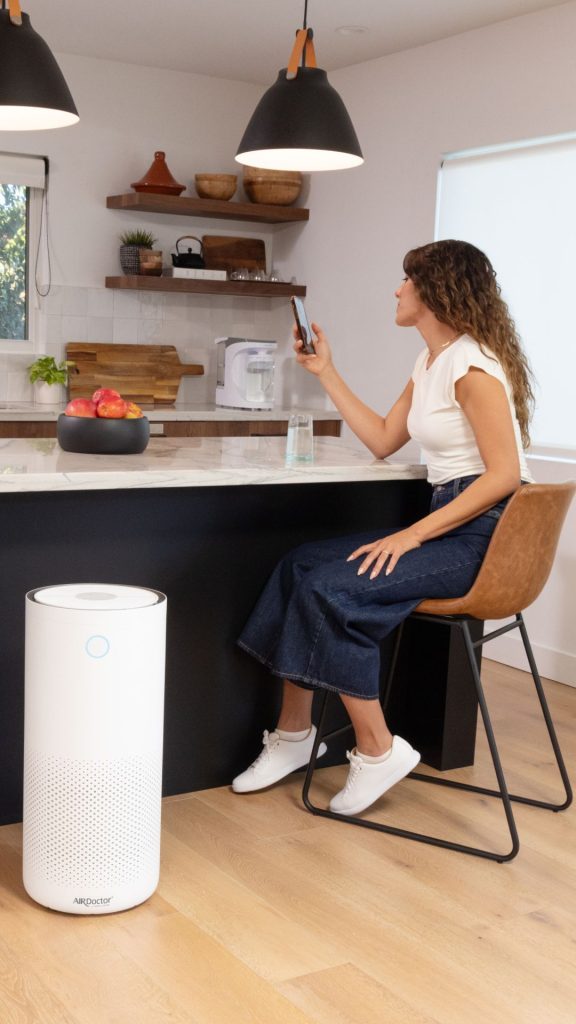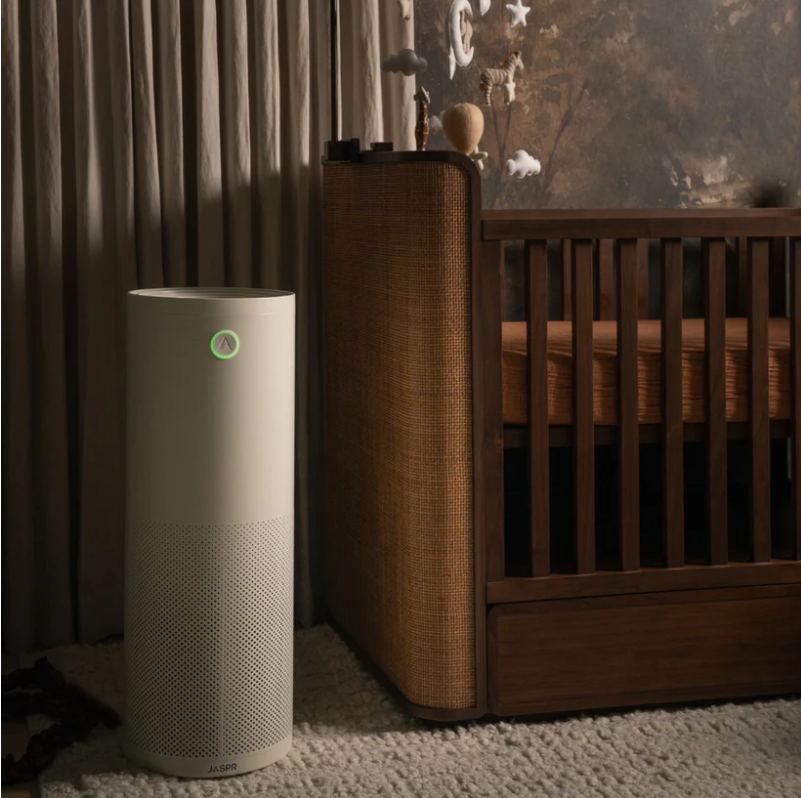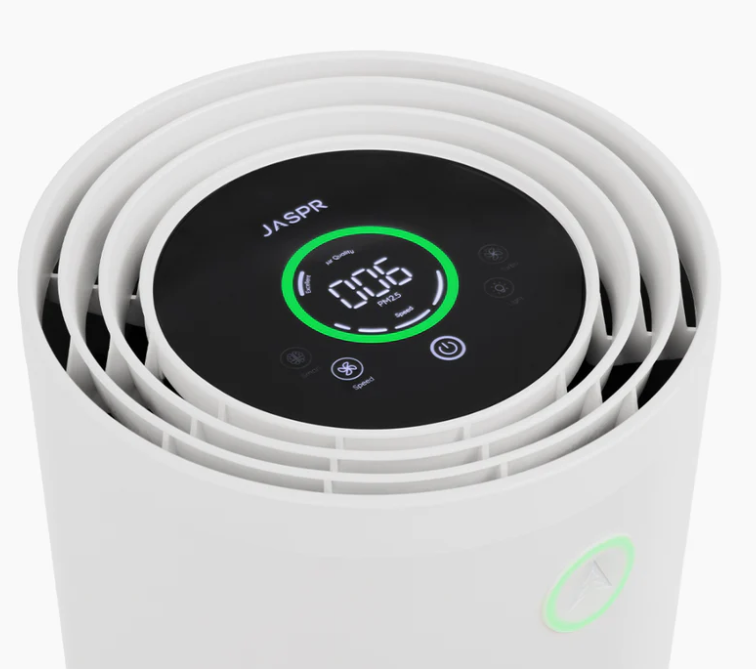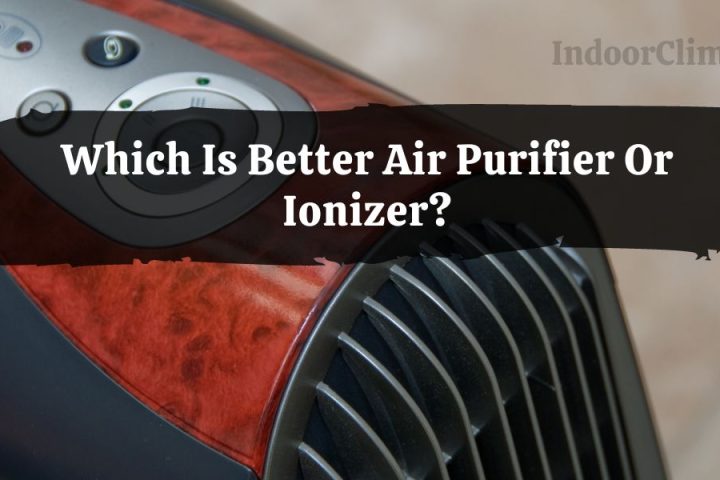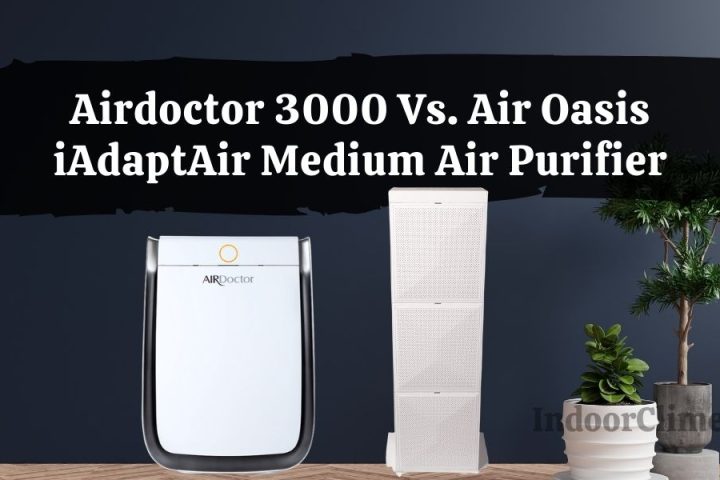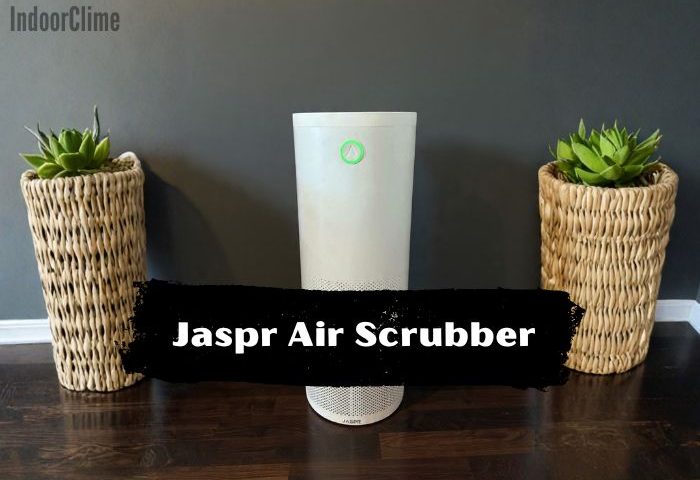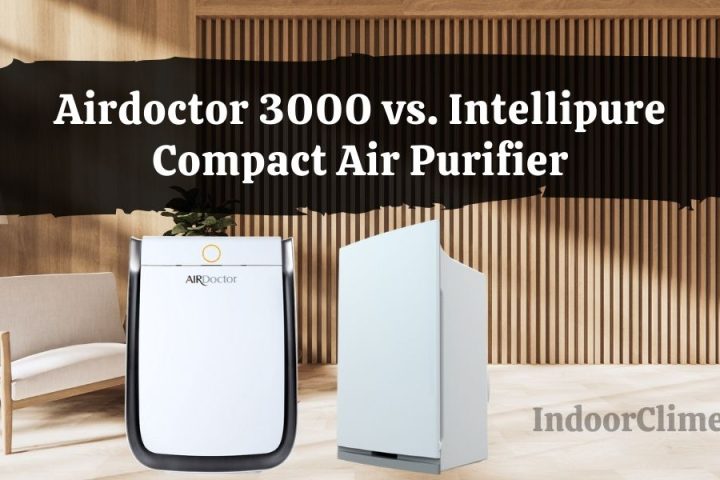When you put the AirDoctor 4000 and the Jaspr Air Scrubber side by side, you’re really comparing two premium, cylinder-style air purifiers aimed at people who worry about things like wildfire smoke, VOCs, and fine dust.
We have tested both units to help you see how each stacks up on key criteria.
Both are serious machines, but once you dig into filtration performance, running costs, and usability, one of them quietly pulls ahead in almost every practical category.
Read on to find out how they compare and which one is better.
| Air Purifier | Air Doctor 4000 | Jaspr Air |
| Room Size Coverage | 694 sq. ft. 4x/hour | 638 sq. ft. 4x/hour |
| CADR (Smoke)/CFM | 370 | 340 |
| Fan Speeds | 6 | 4 |
| Noise Level | 20 – 59 dB | 33 – 58 dB |
| Power Consumption | 50 – 135 W | 30-90 W |
| Dimensions | 19.7″ (W) x 19.7″ (D) x 32.3″ (H) | 11.5” (W) x 11.5” (D) x 31.5” (H) |
| Weight | 15.8 lbs | 25 lbs |
| Price | Check Here | Check Here |
Quick Overview of Each Purifier
AirDoctor 4000
Having spent time with the AirDoctor 4000, it strikes me as a well-engineered solution for someone serious about indoor air quality (IAQ).
The cylindrical form with 360° intake, auto-mode sensor, and robust filtration system give it the feel of a “whole room” purifier rather than a small add-on.
Pros
Cons
Jaspr Air Scrubber
The Jaspr Air Scrubber presents itself very much as a premium, designer air purifier with serious performance ambitions.
It has a steel construction, top-mounted display and smart sensors as standout features. However, that design and performance come at a cost — both upfront and ongoing.
Read our full-in-depth Jaspr Air Purifier review here.
Pros
Cons
Design & Build Quality
Form Factor & Materials
AirDoctor 4000
Cylindrical tower with a perforated lower half for air intake and a circular outlet on top. The body is plastic with a clean, modern look (available in white or black). It is blending into living rooms and bedrooms without screaming “industrial appliance.”
Jaspr Air Scrubber
Tall, slim steel cylinder (cold-rolled steel), also with perforated lower intake and top exhaust. It definitely leans into the “designer” aesthetic—more like a high-end speaker than a typical purifier.
Verdict: Jaspr wins on premium materials (steel vs plastic), while both are attractive, modern cylinders.
Air Intake & Outlet
Both units use a similar airflow pattern:
AirDoctor 4000
- 360° intake around the perforated lower body.
- Air exits upward through the top grille, which helps distribute cleaned air across the room.
Jaspr Air Scrubber
- 360° intake through the perforated lower half.
- Air is pushed out through a circular top vent with ringed louvers; they emphasize “works great in corners,” i.e., not needing to sit in the middle of the room.
Functionally, the intake/exhaust strategy is similar, and both are well-designed for mixing room air.
Read our AirDoctor 4000 comparison to Levoit Core 600S.
And Jaspr Air purifier compared to Dyson BP03.
Controls, Indicators & Usability
AirDoctor 4000

- Simple top touch controls (fan speeds, auto mode, etc.).
- Color ring indicating air quality based on particle sensor.
- Filter change indicator light.
Jaspr Air Scrubber
- Circular top display with digital PM2.5 readout, VOC indicator and fan/smart mode buttons.
- Smart mode automatically ramps fan speed when sensors detect worse air (smoke, cooking odors, etc.).
- All lighting can be dimmed or turned off for sleep, according to user reviews.
Verdict: Jaspr’s display is more informative and “techy,” but AirDoctor’s controls are simpler and still provide auto mode plus air-quality indication. Usability is good on both.
Portability & Filter Access
AirDoctor 4000
- Has wheels, making it easy to move a fairly large cylinder between rooms.
- Filter access from a vertical panel (no flipping needed).
Jaspr
- No wheels; the 25-lb all-metal body must be lifted to move.
- To change the filter, the unit is laid down/tilted and the filter pulled from the bottom—more awkward given the weight (exact motion depends on orientation).
Verdict: AirDoctor is clearly easier to move and service. Jaspr feels more “industrial,” but that works against it in day-to-day handling.
Filters & Filtration Performance
This is where the differences really start to matter.
AirDoctor 4000 Filtration
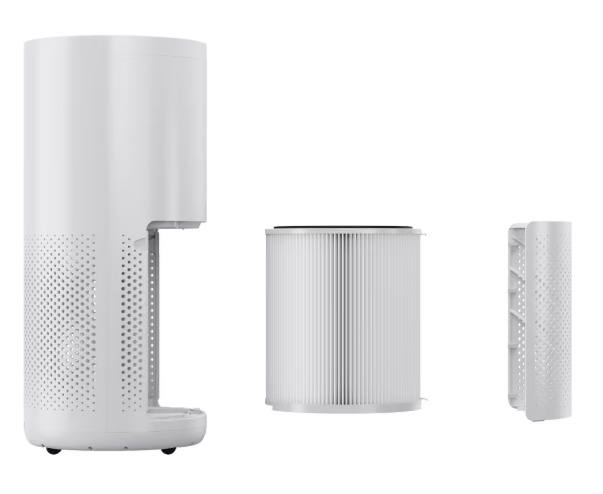
AirDoctor uses a 3-stage system:
-
Pre-filter – Captures larger particles like hair, lint and big dust, extending HEPA life.
-
UltraHEPA® filter – Rated to capture 99.99% of particles down to 0.003 microns—about 100× smaller than standard HEPA’s 0.3-micron requirement.
-
Dual-action Carbon/VOC filter – Targets gases and odors: VOCs from cleaning products, paints, cooking, smoke, and ozone.
In practical terms, this means:
- Excellent capture of ultrafine particles (some viruses, smoke, combustion particles) that many H13/H14 HEPA filters already do well with—but AirDoctor is going after a much stricter tested size.
- A dedicated, fairly substantial carbon stage tuned for VOCs and odors, which is important for wildfire smoke and chemical sensitivities.
Jaspr Air Scrubber Filtration
Jaspr also uses a 3-in-1 cylindrical filter:
-
Pre-Filter – Catches larger dust, pet hair, fibers.
-
HEPA layer (H12) – Captures 99.9% of particles ≥ 0.15 microns.
-
Activated Carbon layer (1 lb) – Interlaced with the HEPA to adsorb odors and VOCs.
Earlier, Jaspr listed 0.5 lb of carbon; after community pressure they updated the spec and now state 1 lb on the product and filter pages.
This is solid, but there are key differences:
- H12 at ≥0.15 microns vs AirDoctor’s 0.003-micron claim is a big gap on paper. Both will handle pollen, dust, and most allergens well—but AirDoctor is clearly pushing deeper into ultrafine territory.
- Jaspr’s combined HEPA+carbon cylinder is convenient but means you always replace everything at once, even if HEPA still has life left—contributing to the high filter cost.
CADR & Real-World Air Cleaning
CADR (Clean Air Delivery Rate) tells you how much clean air the purifier delivers, factoring in both filtration and airflow.
AirDoctor 4000
- Smoke CADR: 370 CFM (629 m³/h).
- 4 ACH coverage: 694 sq ft with 8-ft ceilings (matching the CADR-based calculation).
Jaspr Air Scrubber
- Smoke CADR: 340 CFM (577 m³/h).
- Back-calculating 4 ACH coverage at 8-ft ceilings gives ~638 sq ft.
Jaspr often markets “up to 1,600 sq. ft.”—that’s at much lower ACH, which is fine for gentle background cleaning but not for heavy smoke/allergen situations.
So, AirDoctor 4000 moves very slightly more “clean air” than Jaspr at max speed (higher CADR) and covers a bit more space at the recommended 4 ACH. And it does so while filtering smaller particles.
Verdict: On both filtration quality (particle size, strong carbon stage) and CADR, AirDoctor holds a clear technical edge.
Power Consumption
AirDoctor 4000 consumes about 50 watts at the lowest fan speed and around 135 watts at the highest.
Jaspr Air Scrubber consumes roughly 30 watts at the lowest fan speed and up to 90 watts at the highest.
Both units have an auto mode, so they automatically reduce fan speed when the air becomes cleaner, lowering energy use and keeping electricity bills modest.
Noise Levels
AirDoctor 4000 emits 28 dB of noise at the lowest fan speed and 59 dB at the highest.
Jaspr Air Scrubber emits 33 dB of noise at the lowest fan speed and 58 dB at the highest.
Thanks to auto mode, both units will mostly operate on lower fan speeds during normal conditions, keeping noise levels pleasantly quiet.
Considering their airflow and purification power, these noise ratings are impressively low — you’ll hardly notice either purifier running for most of the day.
Maintenance & Filter Costs
This is arguably the biggest real-world difference.
AirDoctor 4000
- Filter configuration: Pre-filter (washable), UltraHEPA, Carbon/VOC.
- Replacement schedule: For the 4000, AirDoctor currently recommends replacing the entire set every 6 months, depending on use.
- Filter cost: A full replacement set is $89.95.
Estimated annual cost:
If you follow the 6-month guideline strictly, that’s two sets/year → ~$180/year plus shipping.
You can buy filters à la carte, there is no required subscription, and the unit’s filter lights remind you when it’s actually time to change.
Jaspr Air Scrubber
- Filter configuration: One big 3-in-1 filter (pre + H12 HEPA + 1 lb carbon).
- Replacement schedule: Up to 6 months per filter. The company itself admits the HEPA layer could last longer, but the carbon depletes faster; they prefer a full 6-month change for performance.
- Filter cost:
- One-time purchase: $299.
- Filter Club subscription: $199 every 6 months (automatic deliveries), and this is what unlocks/maintains the lifetime warranty.
- Estimated annual cost of Jaspr Air Scrubber replacement filters:
- With subscription: 2 × $199 = $398/year.
- Without subscription: 2 × $299 = $598/year (and no lifetime warranty).
AirDoctor’s maintenance cost is less than half of Jaspr’s best-case subscription scenario and less than a third of Jaspr’s full retail filter price. There’s no lock-in, and the filter spec is at least as strong, arguably stronger.
Upfront Prices
AirDoctor 4000
- Regular MSRP often listed as $799. But only today we got a deal for our blog readers $300 off the price. So you can get it for $499 with free shipping.
Jaspr Air Scrubber
- Standard price: $1,199 USD. But today our readers can get $300 off with our discount code INDOORCLIME so get Jaspr Air Purifier for only $899.
So the upfront costs are clear here, AirDoctor is significantly cheaper, with or without sales.
Putting It All Together – Which Is Better and Why?
If we walk through the key categories:
Filtration quality:
- AirDoctor: UltraHEPA down to 0.003 microns + robust carbon/VOC filter.
- Jaspr: H12 HEPA at ≥0.15 microns + 1 lb carbon.
CADR & coverage at realistic ACH:
- AirDoctor: Smoke CADR 370 CFM, ~694 sq ft @ 4 ACH.
- Jaspr: Smoke CADR 340 CFM, ~638 sq ft @ 4 ACH.
Noise:
Both are quiet on low and mid settings; AirDoctor is a bit quieter at the very bottom end; both are comparable on high.
Ease of use & mobility:
- AirDoctor has wheels and easier upright filter access.
- Jaspr is heavier steel, no wheels, more awkward to service.
Features & sensors:
- AirDoctor offers auto mode and air quality indicator ring; smart versions have app integration.
- Jaspr has a nicer numeric display with PM2.5 and VOC readouts, also auto mode.
Maintenance cost and warranty structure:
- AirDoctor: ~$180/year in filters, no subscription, straightforward 1-year warranty and 30-day trial.
- Jaspr: $398–$598/year in filters; lifetime warranty only if you keep paying the subscription every six months.
So, who should buy which?
AirDoctor 4000 is the better choice for almost everyone who cares about:
- Maximum filtration performance (especially ultrafine particles).
- Strong CADR and room coverage.
- Reasonable noise levels.
- Total cost of ownership that doesn’t spiral into hundreds of dollars a year in filters.
- A straightforward warranty without being locked into a filter subscription.
Jaspr Air Scrubber might appeal if:
- You love the all-steel, minimalist design and visible PM2.5/VOC readout.
- You’re okay paying a premium both up front and annually for filters.
- You really value the lifetime warranty with concierge-style replacement service, and don’t mind that it’s tied to ongoing subscription payments.
But if we’re being bluntly honest while staying neutral in tone:
Spec-for-spec and dollar-for-dollar, the AirDoctor 4000 simply checks more boxes.
It filters smaller particles, cleans slightly more air, runs quietly, is easier to move and maintain, and costs far less to own over the years. Jaspr’s main advantages are aesthetics, metal build, and warranty style—but you pay a steep premium for those, and community feedback has been skeptical about the value proposition.
If you’re choosing between these two specifically and you want the best balance of performance, noise, and long-term cost, AirDoctor 4000 is the more rational buy.


